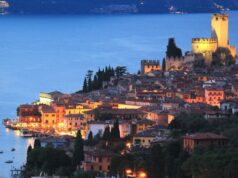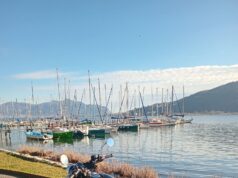The Fascinating History of Lake Garda, Italy
With its bright blue waters, picturesque villages, and Alpine backdrop, Lake Garda provides an idyllic snapshot of Italian beauty. But beyond its scenic surface lies a rich history going back thousands of years. Strategically situated between European powers, Garda witnessed recurring conflict amid long stretches of prosperity and peace. The cultures and rulers surrounding its shores left an indelible imprint on the architecture, art, cuisine and character of the lake region. Lake Garda’s strategic importance and stunning natural bounty make it a unique lens into the history of Northern Italy.
Prehistoric Origins
Humans inhabited the Lake Garda region since the Stone Age, with archaeological evidence dating settlements back 50,000 years around its shores. Fertile land, abundant wildlife, and temperate climate attracted early residents. Archaeologists have uncovered primitive tools, pottery, weapons and burial sites used by garda lake Garda’s first inhabitants.
In the Bronze Age, beginning around 2300 BCE, lakeside dwellers increasingly domesticated animals, farmed the land, and produced bronzeworks. More complex villages emerged, with houses supported by wooden piles driven into the lakebed. Primitive boats likely traversed Garda waters. These early lakeside communities thrived thanks to Garda’s ideal resources.
Roman Settlement – 100 BCE to 400 CE
Under Roman rule, Lake Garda became more strategically important given its prime location near the intersection of main north-south/east-west trade routes. Romans founded new towns, including Verona which became a major military and economic center.
Affluent aristocrats built lavish villas on Garda’s shores to escape the city heat, including the Grotte di Catullo complex still seen today. Roman baths, temples, theaters and infrastructure transformed the region. Olive and grape cultivation flourished under the Mediterranean climate. Roman ships crossed the lake for commerce and military transports.
Post-Roman Collapse – 400 to 1300s
After the Western Roman Empire fell in the 5th century CE, Lombards and other Germanic tribes migrated into the Lake Garda region establishing farming communities. Hrofi, the Lombard word for landmark, became modern names like Riva del Garda. Byzantine forces also vied for control.
Later in the Middle Ages, Lake Garda sat amidst warring Italian city-states. Communes like Venice, Milan and Verona fought for dominance from the 9th to 14th centuries. Fortifications like Sirmione’s imposing Scaliger Castle date to this period as rival powers sought to control the strategic lake. Locals often got caught in the crossfire.
Venetian and Milanese Rule – 1400s to 1700s
By the early 1400s, the powerful Republic of Venice gained lasting control over the eastern side of Lake Garda. They invested in fortresses, infrastructure and lucrative olive/silk trades, while imposing heavy taxes. Venezia’s influence remains visible in ornate villas and Italian architecture.
The western shore fell under the Duchy of Milan’s sphere as the powerful Visconti and Sforza families ruled Lombardy from the 14th to late 15th centuries. Milan encouraged agricultural growth around Lake Garda with trade to the north. Dynamic powers shaped Garda’s culture.
Austrian Control – 1700s to 1866
Lake Garda became a possession of the vast Austro-Hungarian Empire starting in 1796 after Napoleon Bonaparte’s forces marched across northern Italy. The Habsburgs emphasized Garda’s strategic position by building fortresses and roads to move troops. Many lavish villas like Villa Feltrinelli date to Austrian nobility.
The Austrian era left a lasting impact through architecture, cuisine like strudel pastries, and Germanic surnames that replaced Latin-based ones. This cosmopolitan period propelled Garda into a golden age as a vacation and recuperation spot for Austrian elites.
Italian Unification – 1866 to 1918
In 1866, the Kingdom of Italy finally wrested control of Lake Garda after the Third Italian War of Independence expelled the Austrians south towards Verona. Garda became Italia’s largest lake as nationalist fervor sought to unify the disjointed regions.
Grand lakeside hotels were built to attract wealthy Italians. Prominent writers like D’Annunzio promoted Garda’s beauty. Yet poverty persisted for many locals, setting the stage for rising fascism. An industrious but uneven era for Lake Garda and Italy as a whole.
Fascist Rule – 1922 to 1945
The early 20th century saw Benito Mussolini and his National Fascist Party take control of Italy. Lake Garda lay directly north of Mussolini’s birthplace of Predappio and became an important propaganda backdrop promoting Italian athleticism and military might.
Garda hosted sporting events, air shows, and fleet Reviews attended by Il Duce while development surged. The era brought Gardaland amusement park and grand hotels, but also totalitarian oppression for locals who didn’t proclaim loyalty. World War II ravaged the area before Allies defeated the Nazis and fascist rule crumbled in 1945.
Post-War Period – 1945 to Present
In the postwar period, Lake Garda’s scenic beauty made it a prime destination for domestic and foreign tourism. Towns like Sirmione and Riva del Garda became bustling summer resorts, while vineyards carpeted hillslopes.
The economy shifted from industry to service, especially tourism which dominates today. Lake Garda emerged as an iconic emblem of Italian tranquility. Recent decades have focused on maintaining the lake through environmental laws to preserve Garda for future generations. Its rich history continues evolving.
Major Historical Periods of Lake Garda
Lake Garda’s strategic importance within northern Italy made it pivotal for various empires and rulers across the millennia. Here are major periods that shaped its course:
Stone Age Settlement
Stone Age Settlement – Beginning 50,000 BCE, prehistoric inhabitants subsisted through hunting, fishing and rudimentary farming.
Bronze Age
Bronze Age – From 2300 BCE, more sophisticated villages appeared with increasing use of bronze, pottery, boats and pile dwellings.
Roman Era
Roman Era – After conquering the region in 200 BCE, Romans built villas, baths, temples and infrastructure around the lake.
Lombard and Carolingian Rule
Lombard and Carolingian Rule – Various Germanic tribes established communities around Lake Garda between 600-900 CE amidst warring factions.
Medieval Communes and City-States
Medieval Communes and City-States – Rival powers like Venice, Milan and Verona vied for control between 900-1400 CE, building fortresses.
Venetian and Milanese Rule
Venetian and Milanese Rule – Venice governed the eastern shore while Milan held the western side from the 1400s-1700s with competition between the powers.
Austrian Control
Austrian Control – The Habsburgs made Lake Garda part of the Austro-Hungarian Empire from 1796-1866, bringing architectural opulence.
Italian Unification
Italian Unification – Garda became part of the newly united Kingdom of Italy in 1866 after the Austrians were expelled south following independence wars.
Fascist Era
Fascist Era – Benito Mussolini ruled Italy from 1922-1945 with Garda used for propaganda and military spectacles flanked by grand development.
Postwar Period
Postwar Period – After World War II, Garda focused on domestic and foreign tourism, becoming an iconic Italian vacation destination.
Shining Through History
Across centuries of dramatic change, Lake Garda itself remained the steadfast star carved out long ago by glaciers. Its astounding beauty and temperate climate attracted inhabitants since the earliest humans. Garda was a refuge balanced between mighty empires to the north and south through tumultuous eras.
The lake persists as a glistening jewel in Northern Italy. Its colorful past lays the foundation to better understand the mosaic of cultures and landscapes distinguishing Lake Garda today. Each new generation contributes their chapter while the lake’s timeless splendor flows into the future.
Best Places to See on Lago di Garda
How Deep is Lake Garda
FAQs – History of Lake Garda
Q: What is the history of Lake Garda?
Lake Garda has a rich history dating back to ancient times, with influences from various civilizations, including the Romans and medieval settlements.
Was Lake Garda important in Roman times?
Yes, Lake Garda was a significant trade route during Roman times, connecting northern Italy to the rest of the empire.
Are there historical ruins around Lake Garda?
Yes, you can find Roman ruins, including villas and artifacts, around Lake Garda that offer insights into the past.
Did Lake Garda play a role in medieval history?
Absolutely, Lake Garda was a strategic area during the medieval period, with various towns and fortifications built along its shores.
Which historical towns can be explored around Lake Garda?
There are many, including Sirmione with its Roman ruins, Malcesine and its medieval castle, and the charming town of Garda itself.
How did Lake Garda influence local culture?
The lake has influenced local cuisine, traditions, and even dialects, contributing to the unique cultural blend found in the region.
Were there any significant battles fought near Lake Garda?
Yes, Lake Garda and its surrounding areas were witness to various historical conflicts, including battles during the Napoleonic Wars.
What role did Lake Garda play during the Renaissance?
The lake area was a source of inspiration for artists and writers during the Renaissance, contributing to the cultural development of the region.
How did Lake Garda impact trade and commerce?
Lake Garda facilitated trade routes, connecting northern Italy to other regions and fostering economic growth.
What historic events shaped the development of Lake Garda’s towns?
Events such as the Venetian control, Napoleonic rule, and Austrian influence shaped the towns around Lake Garda.
Are there any historical landmarks on Lake Garda’s islands?
Yes, the Borghese Island features the Grotto of Catullus, a Roman villa complex, offering a glimpse into the past.
How did Lake Garda contribute to art and literature?
Lake Garda’s stunning landscapes and serene ambiance have inspired poets, writers, and artists throughout history.
What is the significance of Scaliger Castle in Sirmione?
Scaliger Castle, a medieval fortress, played a crucial role in protecting the town of Sirmione during turbulent times.
Are there historical museums around Lake Garda?
Yes, there are several museums dedicated to preserving the history and heritage of the Lake Garda region.
How did Lake Garda evolve during the Industrial Revolution?
The Industrial Revolution brought changes to Lake Garda’s economy, transportation, and urban development.
Did Lake Garda have religious significance in history?
Yes, various religious sites and monasteries around the lake have historical and cultural significance.
Were there any famous historical figures associated with Lake Garda?
Figures like the poet Catullus and the scientist Galileo Galilei had connections to Lake Garda.
How has Lake Garda’s history influenced tourism?
Lake Garda’s rich history, combined with its natural beauty, has contributed to its popularity as a tourist destination.
Are there guided tours that focus on the history of Lake Garda?
Yes, many tour operators offer guided tours that delve into the historical aspects of the Lake Garda region.
How can visitors explore the history of Lake Garda during their stay?
Visitors can explore historical sites, museums, and cultural events to learn about Lake Garda’s captivating history.
- The Fascinating History of Lake Garda, Italy
- Prehistoric Origins
- Roman Settlement – 100 BCE to 400 CE
- Post-Roman Collapse – 400 to 1300s
- Venetian and Milanese Rule – 1400s to 1700s
- Austrian Control – 1700s to 1866
- Italian Unification – 1866 to 1918
- Fascist Rule – 1922 to 1945
- Post-War Period – 1945 to Present
- Major Historical Periods of Lake Garda











